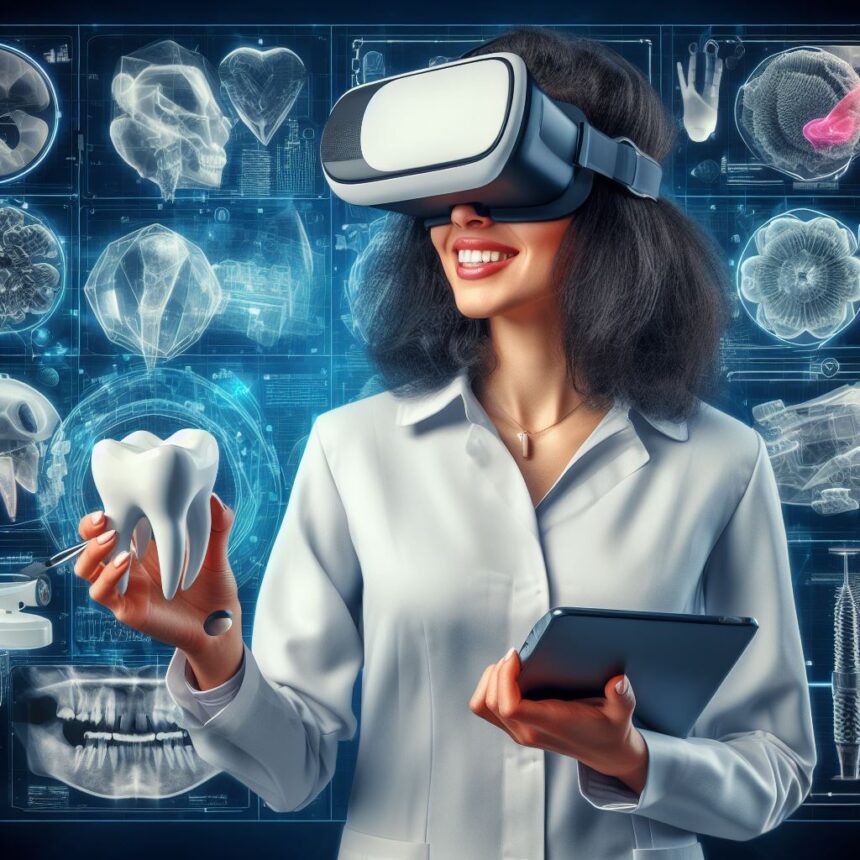The digital revolution has fundamentally transformed dentistry and the patient experience by incorporating innovations. These technologies aim to improve clinical outcomes, streamline administrative tasks, enhance patient education and communication, and ultimately create a more positive, transparent, and satisfactory experience. Here’s how:
Appointment Scheduling And Patient Communication
In the past, scheduling appointments involved lengthy phone calls and relying on staff to manually update calendars. Emerging patient engagement systems allow people to book appointments online according to real-time availability. This brings convenience for patients and reduces no-shows. Customized text and email reminders minimize missed appointments by confirming time slots in advance.
Many practices are also adopting two-way text messaging for seamless communication about pending items, treatment plans, or prescription queries. This facilitates an ongoing patient-dentist dialogue while making interactions more efficient compared to phone calls. Collectively, these digitally-enabled scheduling and communication functionalities enhance patients’ access to dental services.
Digital Impressions, 3D Imaging, And Robotic Dentistry
Traditionally, dentists took physical impressions of patients’ teeth using unpleasant impression materials that sometimes caused gagging. In digital dentistry, an intraoral scanner or handheld wand is simply moved around the mouth to generate 3D images of the teeth and soft tissues. According to my dentist, this process is more comfortable, takes less time, and allows dentists to instantly view highly accurate renderings of the patient’s mouth on a screen.
Likewise, 3D imaging modalities like CBCT scans capture information that is used for highly precise analysis of dental structures prior to procedures like the placement of dental implants. Patients benefit from minimized chair time and fast turnaround of digitally manufactured restorations.
Robotic dental surgery leverages 3D visualization to enable automated implant dentistry. A robotic arm guided by a dentist can accurately place implants in optimally angled positions based on 3D images. This results in faster healing and better long-term implant stability. Robot-assisted surgery greatly reduces invasiveness compared to traditional methods.
CAD/CAM Dentistry
Crowns, veneers, inlays, onlays, and bridges were traditionally fabricated by dental technicians in labs, which entailed multiple appointments, temporary fittings, and delays as restorations went back and forth between dentist and lab. Digital dentistry has revolutionized this process.
Using CAD (computer-aided design) and CAM (computer-aided manufacturing) technology, dentists can now digitally design restorations and use milling machines to craft same-day end-products out of materials like ceramics. Patients can get a custom-designed crown, veneer, or set of veneers made and fitted during a single appointment. No more temporaries, no more waiting weeks for lab work. This is a huge improvement in convenience.
CAD/CAM systems are also used to make clear aligners for discreet and comfortable teeth straightening as an alternative to metal braces. Again, technological innovation translates into an improved patient experience.
Lasers In Dentistry
The use of dental lasers continues to grow. Hard and soft tissue dental lasers can reshape gums, remove decay, and prepare teeth for fillings or crowns in a minimally invasive manner with little or no need for drills or anesthesia. Lasers significantly reduce the pain and anxiety associated with procedures like fillings. They also minimize bleeding and stitches in soft tissue contouring procedures.
No shot and no drill dentistry dramatically improves the patient experience. Lasers cauterize nerve endings as they cut, sealing blood vessels for a bloodless procedure. Patients experience less swelling and recover faster. The precision and versatility of laser dentistry are reshaping workflows in dental offices and patients’ attitudes toward going to the dentist.
Teledentistry
The recent pandemic necessitated remote dental consultations via phone, videoconferencing, and image sharing. Dentists found that teledentistry could be used for effective triage, assessment, education, and post-procedure follow-ups. Patients appreciated the convenience of not having to commute to an office for simplicity issues.
Teledentistry provides a channel for people in underserved communities or with mobility constraints to access dental expertise. It allows dentists to do video consultations when deciding if an in-office exam is required. The advent of teledentistry expands the availability of dental care while making services more reachable for certain populations of patients.
Oral And Maxillofacial Implants
Replacing missing teeth and reconstructing facial injuries poses clinical challenges. Oral maxillofacial implants integrate with the bone and enable precise restorative results. Advanced 3D modeling, surgical guides, navigation systems, and robotically assisted implantation allow for minimally invasive implant placement with superior accuracy, faster recovery, and lower risk compared to traditional techniques.
Further, innovations like zygomatic implants are stabilizing and successful long-term solutions for patients with no viable bone left for grafting procedures. They have transformed prospects for patients previously deemed untreatable. The new landscape of oral maxillofacial implantology has made solutions for tooth loss and facial reconstruction more accessible, efficient, and effective for patients.
Digital Patient Education
Patient education is a cornerstone of high-quality dental care. Digital solutions are making dental health education more engaging, personalized, and accessible. Interactive presentations in waiting rooms use visuals, quizzes, and videos tailored to different patient groups. This makes learning about oral health topics more enjoyable compared to brochures or posters.
Many dentists are also creating their own educational YouTube channels to share hygiene instructions, information about dental procedures, and answers to common questions. Patients appreciate multimedia resources that demonstrably improve oral health literacy in an easy-to-digest manner. Moving patient education into the digital realm represents a shift toward participatory, transparent dental care.
Internet Of Things (IoT) And Smart Toothbrushes
IoT-enabled electric toothbrushes give real-time feedback and collect data on brushing patterns. Through connected apps, patients can track statistics like duration, frequency, and coverage and receive personalized suggestions for improving their oral hygiene habits. Games and 3D animations showing plaque buildup make at-home care more engaging and educational.
This data helps dentists better understand home care challenges faced by patients in-between visits. It facilitates preventative, patient-specific recommendations for techniques and trouble areas. IoT toothbrushes turn oral care into an interactive experience with tangible metrics for gauging improvement. Patients feel empowered to take charge of their daily hygiene and overall oral health.
Biotechnology And Regenerative Dentistry
Biotechnology advances are opening doors to regenerative dentistry—the process of regrowing dental tissues. Solutions like enamel regrowth to reverse early tooth decay and experimental drugs to stimulate natural tooth repair and regeneration will transform treatment options for dental disease. Already, technologies like platelet-rich fibrin speed up healing following procedures.
Tissue engineering and 3D cell printing will enable the repair and replacement of damaged oral tissues. Right now, research is focused on growing viable teeth from stem cells to replace missing teeth. Bioengineered teeth will be the ultimate game-changer. Down the line, patients may have the ability to ‘regrow’ and repair teeth instead of implants or bridgework. Regenerative solutions will radically change outlooks for patients’ lifelong oral health.
In Conclusion
The integration of cutting-edge digital dental technologies is driving a shift toward more preventative, minimally invasive, and patient-tailored dentistry. By making procedures faster, more accurate, and comfortable while engaging patients in their oral health, innovations in AI, 3D printing, and other areas are significantly elevating patient experiences and outcomes. This digital transformation of dentistry is expected to continue advancing positive trends.








